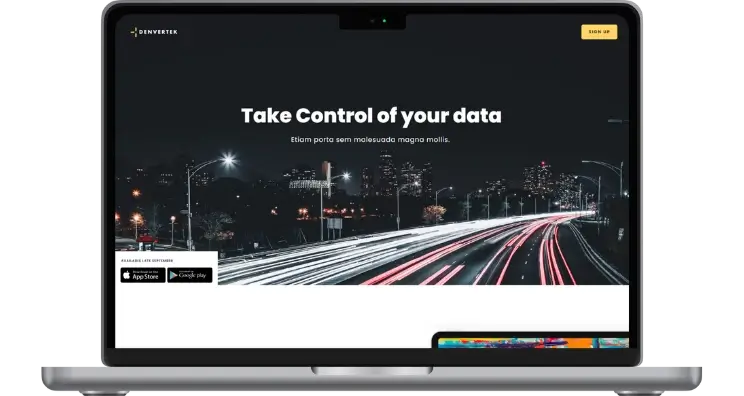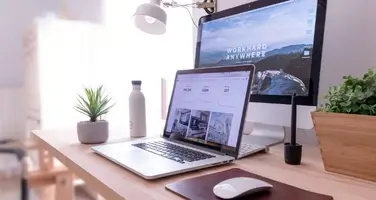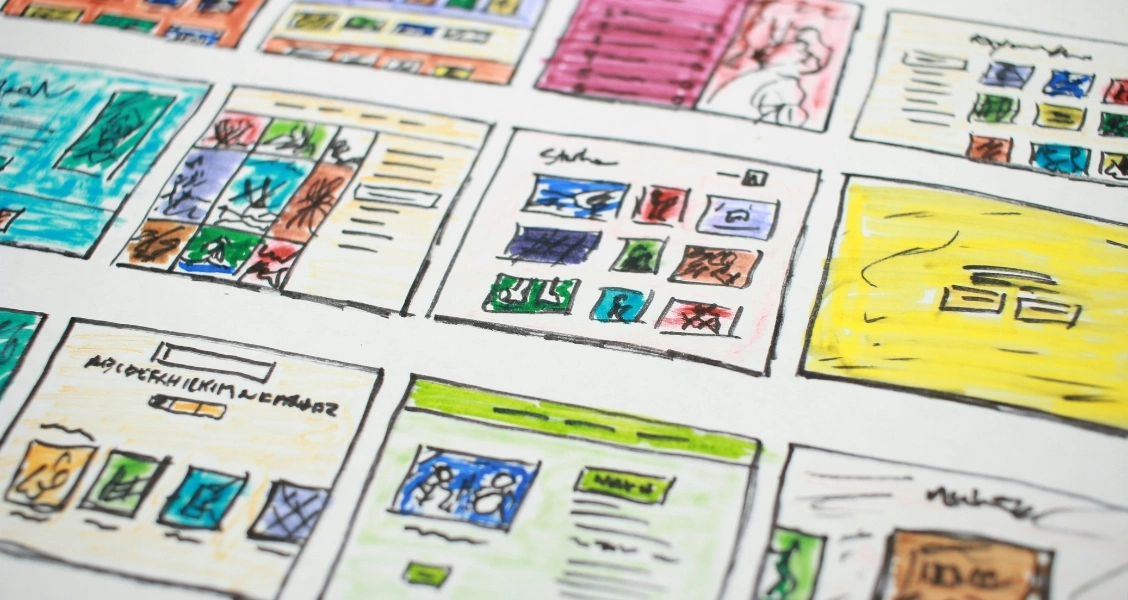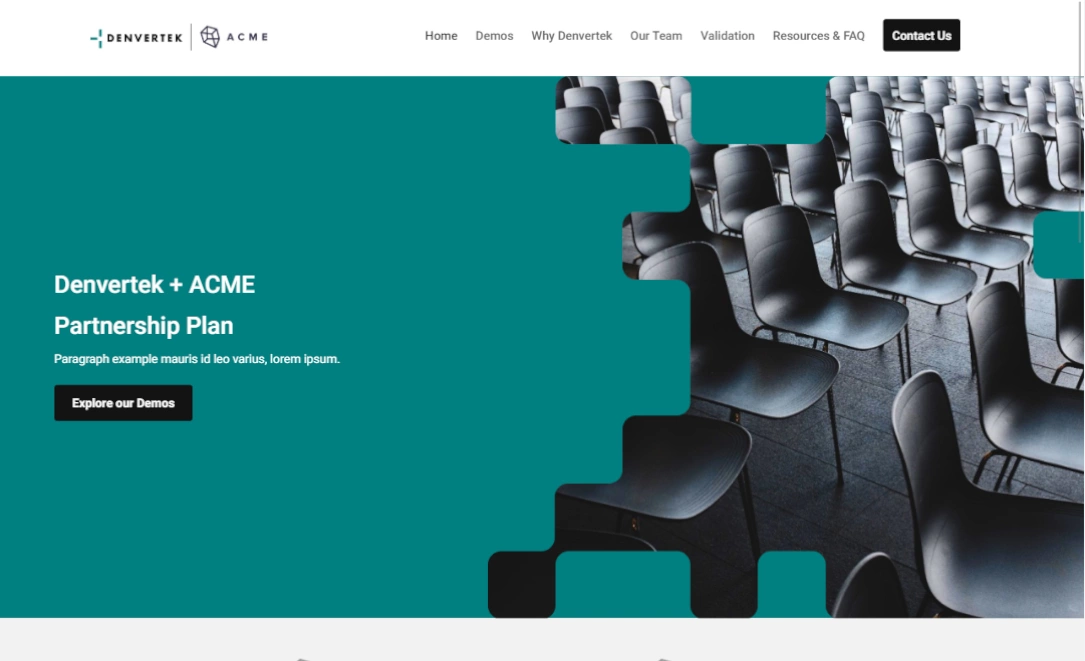It’s really hard to forget an incredible pitch. Anyone who has seen the film Tommy Boy remembers the sales meeting when Chris Farley’s character sets a miniature car on fire during a deskside demo. Or every scene in Glengarry Glen Ross where Alec Baldwin gives a rant-fueled speech to fellow salespeople. The most important takeaway in these classic film scenes is that when it comes to client pitches, you have got to stand out.
Here’s where microsites come in. A microsite can allow you to do much more than a standard PDF or PowerPoint presentation. A microsite lets you customize your pitch to appeal to all stakeholders. With a microsite platform like Zoomforth, you can ensure that everyone from the COO to the CFO has a custom pathway throughout your proposal with engaging aesthetics, powerful visuals, real-time analytics and so much more.
Want to make a powerful pitch without burning a car on someone’s desk? Let’s look at what a microsite can do for you.
Microsites are a custom experience for every stakeholder
One of the biggest benefits of using a microsite over a more traditional medium like a PDF is that you can customize navigation and experiences throughout the process based on who will be accessing the microsite.
With microsites, you can create a clear navigational path for each stakeholder’s likely areas of interest to make it easy for them to find what they need. It works like on any other website: you can click between pages, within a page or to content on another site or document.
Send the COO directly to an implementation plan, rather than letting them dig for it through a document. Create a section of secure financials for the CFO to access and a direct link to a strategic value and risk assessment for the CEO to look at.
With a microsite builder like Zoomforth, you can also create personalized sites with custom URLs to further customize each client’s experience.
Appeal to the masses and their senses
Not only is it a fantastic experience to allow stakeholders to click directly into the most relevant information for them, but you can also make sure that what they’re clicking on will hold their attention.
Everyone has a preference for how they consume and process information. With a microsite builder like Zoomforth, you can make sure the content you’re creating appeals to how they prefer to digest information.
Visual viewers
There are the folks that have a-ha moments once they spot something that engages their eyes.
To best appeal to visual learners, you can use video, infographics, images, graphs, and charts to help explain your proposal and ensure they’re absorbing and enjoying your presentation’s format.
Audio archetypes
Some of your audience may prefer to hear rather than see. To appeal to audio senses, you can upload recorded Zoom meetings, include transcripts with audio, or incorporate verbal instructions.
Kindred kinaesthetic spirits
Even in an increasingly virtual world, many people need to have an experiential format in order to take in new information.
For kinaesthetic learners, you can include interactive content, interesting hover effects, and downloadables for those who like to have something to engage with or hold in their hands.
A microsite allows you to appeal to these three distinct senses to give clients a really memorable experience that is sure to stand out among your competition.
Make an impact, get a decision
So, microsites allow you to appeal to the senses, but let’s take it one step further. You can also use microsites to engage different personalities.
There’s an array of personality types, and they make business decisions the same way they decide on where they want to go on vacation or what house they’d like to buy.
Allow us to introduce you to some of them!
Big picture paul
This personality type loves to see a concept-driven proposal. Paul loves a microsite that leads with ideas and offers summaries and outlines, clear, purposeful headlines, and interactive design that calls out core messaging. Paul loves nothing more than to walk away from a proposal and feel invigorated and ready to say, “You’re hired!”
In-the-details debbie
Deb doesn’t just want to see a proposal, she wants to see a timeline, project plans, and the nitty-gritty. For detail-oriented stakeholders like Deb, Zoomforth lets you design your microsite with overlays that reveal additional detail when you click on them, to add depth to the high-level points you are making. Does Deb love to print things and review them at her desk? You betcha. Luckily you can upload any downloadable documents she may need.
Objective oliver
Oliver, and other objective decision-makers, want to see facts and figures. They care less about the team bios and more about how your team will get them from point a to point b. Easily show them proposed outcomes, deliverables, figures, and targets. They can skip what they consider to be “fluff” and dive right into the numbers.
Subjective sara
Sara is the opposite of Oliver. She goes by feelings, not facts, and figures. The first thing she wants to see on the microsite is an ‘About Us’ video and learn about the company culture and values. She wants to read about the team. And if she notices that one of the team members is also a corgi owner, she’s done for. She’ll be ready to work with your company.
With a microsite platform like Zoomforth, appealing to all of these personality types is easy to do. With custom templates and the ability to create pathways for different stakeholders with distinctive personalities, you can create a truly memorable experience for present and future clients.

Closing the deal
A big deal can take months to close, from the first introductory call to the final sign-off.
Rather than sit back and wait, with your PDF saved to a dozen different desktops at your future client’s firm, stay in regular touch by giving them reasons to come back to your microsite. In fact, make it so compelling that they become almost reliant on it!
- You might want to include a curated set of insights and thought leadership that speaks to your client’s problem. Refresh this regularly at the click of a button, giving them additional reasons to realize your company has its finger on the pulse.
- Include a document library in your microsite and upload each new document to a single, central location to make it easy for the client to access everything in one place. Any additional tasks throughout the process can be an easy click away, rather than being sent as large email attachments.
- Reveal specific pieces of content as the relationship develops such as pricing, project milestones, documents for review and approval so as not to overwhelm with detail right out of the gate.
- Most importantly, know exactly when to follow up. With Zoomforth, you can see real-time analytics on what your client is clicking on, what pages they are spending their most time on and if there is information that they simply haven’t checked out.
- You can also get granular and see what each specific stakeholder has checked out. You might notice that the CEO has watched your video straight through (yes!) or perhaps clicked out of it at the :30 second mark and missed your killer summry (noooo!). Having access to these analytics will help inform how you pitch clients going forward, but also give you valuable information about the type of person you’re dealing with.
There’s no longer a need to leave clients or money on the table with the powerful medium of microsites.
Once you’ve made your first site using Zoomforth, you can clone it in a few seconds and then shift the content around on each new site, with just a few clicks, depending on what you want each prospective client to focus on first.
Create interactive, trackable and secure sales proposals with Zoomforth.



